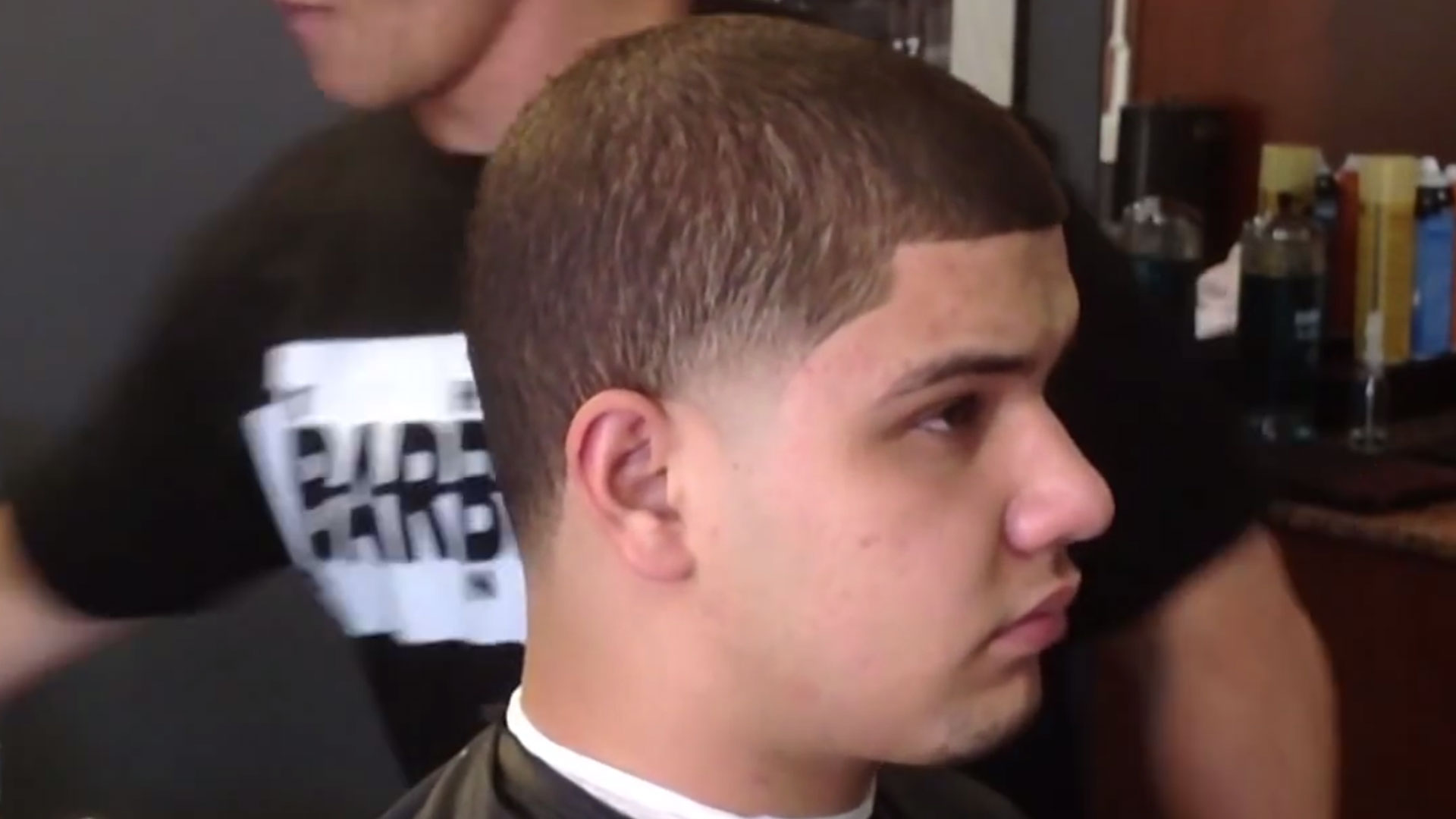
You can add line work, personalized fringes, and various undercuts. Barbers use a clipper and comb or a clipper with a variety of guards to gradate the hair.

On the other hand, a fade reduces hair around all the sides and neck until it “disappears” into the skin. Barbers retouch the edges with shears or a standard trimmer.
TAPER FADE IN SPANISH SKIN
Whether the trim is close to the skin or only an inch long, the hair remains the same length near the ears and neckline. Men who love traditional looks tend to opt for a taper. However, the visual results and the techniques to make them is stark. Tapers and fades refine the hair around the face and neck. Once your scalp develops fuzz or longer hair becomes unruly, it’s time to revisit your barber or try a DIY trim at home. Your hair grows 1/2 inch every three to four weeks. Both products give your hair a wet look and an elegant shine.

Remove all the hair around your ears and in the back below the fade line. A friend can help with areas you can’t see or reach, but mirrors are useful too. Begin with the taper by removing hair on the sideburns and the neckline with a trimmer.

Detangle and straighten with a comb or brush. Start trimming your hair after it is fresh and dry from a shower. For this tutorial, the following steps are from the bottom to the top. Then, move onto the fade by scaling the rest of your head in incremental movements.Įvery barber uses a personalized method to trim from the bottom to the top or vice versa. Start with the taper since it removes smaller portions of hair on the face and neck. To create a taper fade at home, you’ll need two mirrors, a comb, trimmer, and clippers. Discuss any concerns about which taper fade will fit your hair type and style. If this is your first time trying a tapered haircut, ask your barber during your next appointment.
TAPER FADE IN SPANISH HOW TO
How To Get A Taper Fade Haircut?īuilding a foundation of knowledge for this haircut can help you determine how to get one in the future. With such a short length between the crown to the fade, this dramatic version is ideal for high and tight haircuts such as quiffs, comb overs, and high tops. The taper leads approximately two inches from your natural hairline and thins out on the sides and back. The shortest measurement is near the temple. Since the central hairstyle fits varying long-to-short inspired hairdos, the mid taper fade works well with everything from crew cuts and French Crops to faux hawks and pompadours. Instead of trimming around the ears, the fade gradation raises to the eye line. The next level up is approximately an inch higher. If you prefer avoiding shorter hairstyles where you feel exposed, this is the best option for a side part, pompadours, a comb over, and an undercut. It’s the safest option with the least amount of fading between the hair on the crown and sides.

A low taper fade starts at the lowest point near the ears.


 0 kommentar(er)
0 kommentar(er)
